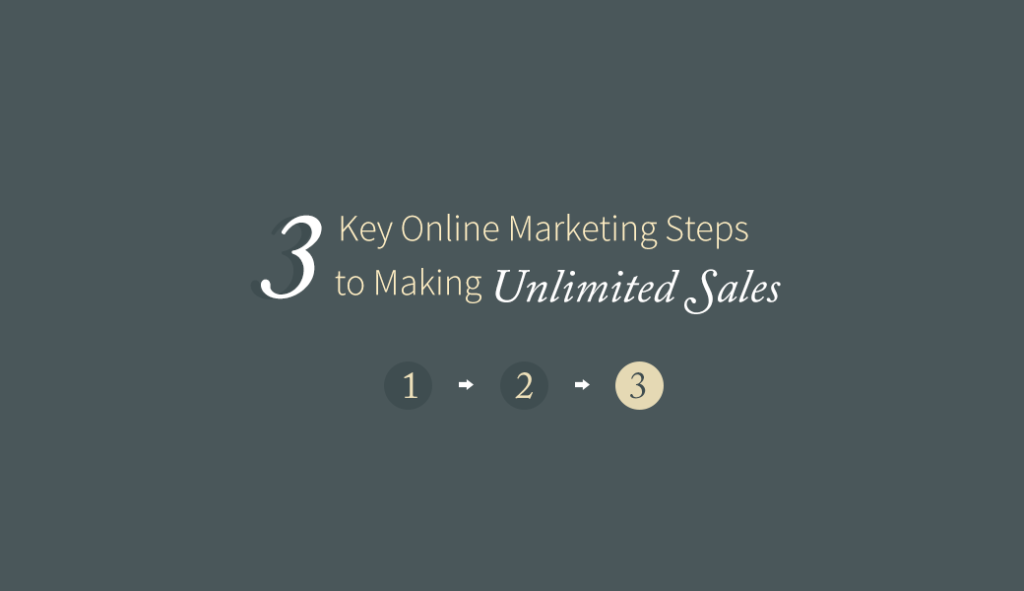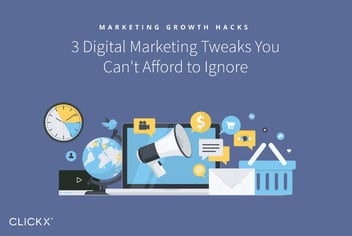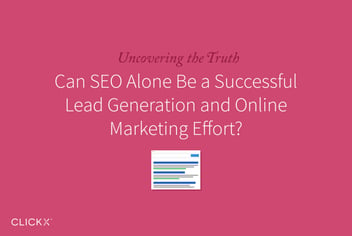3 Key Online Marketing Steps to Making Unlimited Sales
Let’s start with the obvious: To make maximum sales, you need to target and reach people who will buy what you’re selling. And obviously you need to give customers what they want.
However, a popular DIY method of going after online sales is to ignore those concepts and instead just throw some marketing at the wall and see which parts of it – if any – stick.
Probably not the best strategy.
More proactively, putting together a Customer Acquisition Plan is a smart move. Identifying who your customers are, naturally leads to knowing what you can do for them and influences how you communicate; both in terms of messages and channels.
In this article, we’ll explore three key – but often overlooked – customer acquisition steps that can convert your online marketing strategy into potentially unlimited sales.
1. Know Your Customers
You need to know who wants what you have, so create a customer profile, or persona, for each market segment that you serve (or could serve).
If you’re selling a wide range of bubble baths, some of your customers will be kids and some will be self-pampering women, and each market will have its own persona. Targeting your customers ensures that your message is relevant, well-received, productive and cost-effective.
Here’s the short list of things you should know about your customers:
- Who they are
- What they do
- What they buy
- When they buy
- How they buy
- How much money they have
- What makes them feel good about buying
- What they expect of you
- What they think about you
- What they think about your competition.
Identifying customers is becoming more involved as social, mobile and local advertising increasingly join the mix. According to an article in the Harvard Business Review:
Even as companies work (and sometimes struggle) to acquire these familiar kinds of customer data, the growing availability of social, mobile, and location (SoMoLo) information creates major new data sets to be mined. Companies are beginning to craft offers based on where a customer is at any given moment, what his social media posts say about his interests, and even what his friends are buying or discussing online.
Analyze your best current customers to learn what they are like, and search out concentrations of similar potential buyers. Research the demographics and psychographics of your customers – the ones you have and the ones you want. Demographics are the facts about who and where, how old, how much money, how much education. Psychographics focus on lifestyle, personality and behavior – where customers shop, which media they use, which brands they like.
Online resources can help you identify your customers; for example:
- For demographics: Nielsen Segmentation offers a free tool that provides basic information by zip code as to household income, spending and composition, ethnicity, median age, etc. Get data on your current customers and learn where similar and/or ideal customers live. Statistics by U.S. county are available from the Census Bureau; trade associations also provide demographic information.
- For psychographics: Read what people are saying online – comments in relevant forums, reviews for products similar to yours. Simple surveys added to your website (easy with WordPress plugins) provide specific information about what customers want.
2. Know What You Can Do for Your Customers
You need to know which problem(s) you are solving for your customers.
What do they need from you – not just product features or information in order to make a buying decision, but also to feel good about your company? How can you improve their lives? Are you offering them a once-in-a-lifetime bubble bath experience? Natural-ingredient bubble baths that will leave their skin rejuvenated? Can they come to your website to learn about the history of bubble baths, bubble bath games, or famous out-of-control bubble baths?
You have to understand what your customers really want by knowing them thoroughly. Then you need to identify, for each persona, how your company uniquely can provide what your customer wants. This is your USP (Unique Sales Proposition): what your business offers that no one else does; why the customer will come to you.
Just how unique do you have to be? Here’s some advice from copyblogger.com:
If you’re not trying to launch FedEx, you don’t need a USP as robust as FedEx’s … Remember that information consumers don’t go to just one blog, subscribe to just one site, or buy just one product. They want anything and everything about the topic they love. That means your USP doesn’t have to beat everyone else out. It just has to play nicely with the other offerings in your group.
3. Know How to Connect with Your Customers
You need to know which strategies and techniques will best reach your customers – and not only reach them, but connect with them in a relationship-building way. Avoid scattershot; target your marketing so your customers see it.
Ways to connect with your customers include:
Your Website
The hub of your online marketing, your website represents your brand, attracts and engages visitors, generates leads, and funnels sales to completion.
It should be full of unique high-quality content that your customers are looking for, thus establishing you as an expert, raising your brand profile, and making you more trustworthy to buy from. To rank well with search engines, your content should be written using best SEO practices. A large amount of your site content should be ‘evergreen’ – information that will endure over time, with well-crafted calls-to-action.
A website is a must-have even for local businesses. It becomes the hub for an online marketing plan that is locally focused. Most people never flip through the Yellow Pages – they use search engines to find where to eat, test-drive a car, and buy their favorite bubble bath in jumbo economy size.
Your Mobile Website
It’s not enough to have a fantastic website – your site needs to be fantastic on a wide range of devices and platforms. In other words, it needs to be optimized for mobile.
If you have technical savvy, or no fear – you can DIY. Various plugins for CMS (Content Management Systems) aim to give your site a reasonable mobile presence. Still, you may want small-screen professionals to create a mobile site that integrates functions in user-friendly ways.
Social Media
Connecting with your customers via social media can grow your brand awareness, stake out your territory in your customers’ favorite online communities, and make sales. However, it can also turn customers against you if done amateurishly, or inappropriately for your industry. Be sure to familiarize yourself with best practices for social media and/or get some professional advice.
Retargeting
Advertising has long been a cornerstone of building customer connections. Retargeting is a sophisticated technology that enables you to display your ads only to people who have already visited your site. Using cookies, you follow your prospective customer around and insert ads on sites she’s visiting. Your target customer is on some site shopping for shoes when your ad appears in the sidebar, reminding her that what she really wants is bubble bath.
Live Chat
For two-way communication with your customers, live chat has the big advantage of feeling natural. Instead of having to switch channels by picking up a phone or joining social media, the customer can just type onto the website – and get all questions answered by a real person. A study of 2000 participants found that live online chat has the ‘highest customer satisfaction rate of all customer service touch points’.
Conclusion
[Tweet “For unlimited sales, know your customers and how to connect with them.”]
Professional online marketing services – with their specialized tools, resources and expertise – can be a big help in identifying, understanding and targeting your markets. Marketers keep up with the latest in the field and do tracking analysis for quantifiable results and a clear ROI. You, on the other hand, have a business to run.
Still, acquiring a good knowledge of marketing basics can be only good for you and your business. If you do undertake the adventure of DIY marketing, just make sure you do it with a Customer Acquisition Plan!




